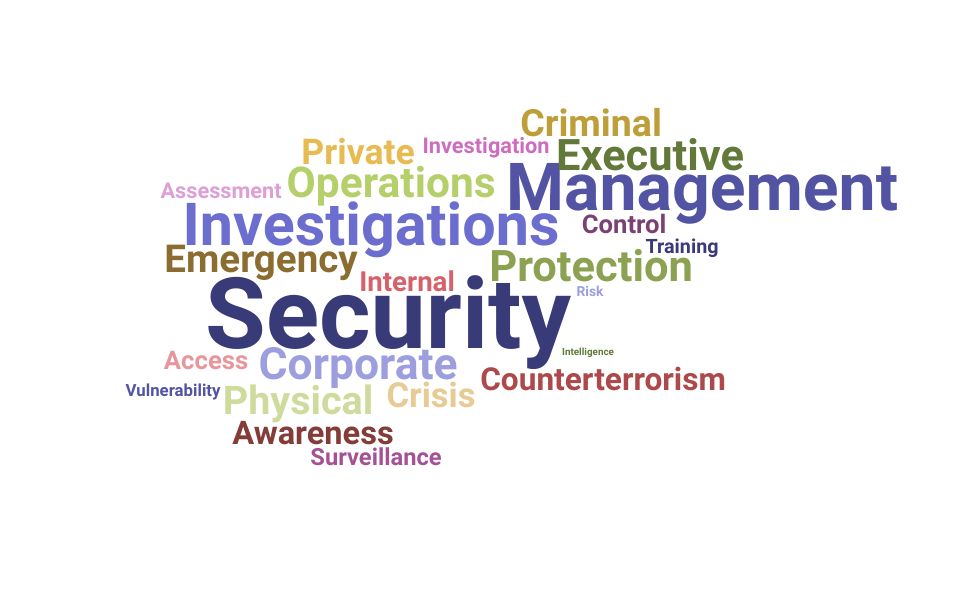Letting loose the Power of Corporate Security: A Comprehensive Guide
Letting loose the Power of Corporate Security: A Comprehensive Guide
Blog Article
From Cybersecurity to Physical Procedures: Reinforcing Business Security in a Transforming Globe
By integrating the strengths of both cybersecurity and physical security, companies can develop a detailed protection strategy that deals with the diverse array of dangers they deal with. In this conversation, we will certainly explore the altering threat landscape, the demand to integrate cybersecurity and physical safety and security, the application of multi-factor verification steps, the relevance of worker understanding and training, and the adjustment of security procedures for remote workforces. By analyzing these vital locations, we will obtain valuable insights right into just how organizations can enhance their business safety and security in an ever-changing globe.
Understanding the Changing Hazard Landscape
The developing nature of the modern-day world demands a detailed understanding of the altering risk landscape for effective business safety and security. In today's interconnected and digital age, hazards to corporate safety and security have become more intricate and innovative. As modern technology developments and organizations come to be progressively dependent on electronic infrastructure, the possibility for cyberattacks, data violations, and various other protection violations has actually considerably raised. It is important for companies to stay educated and adjust their safety and security gauges to resolve these advancing hazards.
One key element of recognizing the altering risk landscape is identifying the various types of dangers that companies deal with. Cybercriminals are continuously developing new strategies to exploit susceptabilities in computer system systems and networks. These threats can vary from malware and ransomware attacks to phishing frauds and social engineering methods. In addition, physical hazards such as theft, vandalism, and company reconnaissance continue to be prevalent problems for companies.
Monitoring and analyzing the danger landscape is important in order to recognize prospective dangers and vulnerabilities. This entails staying updated on the most recent cybersecurity patterns, evaluating threat intelligence records, and performing normal threat assessments. By comprehending the changing threat landscape, companies can proactively carry out suitable protection actions to alleviate dangers and safeguard their properties, track record, and stakeholders.
Integrating Cybersecurity and Physical Safety And Security
Integrating cybersecurity and physical security is vital for detailed corporate defense in today's digital and interconnected landscape. As companies progressively count on modern technology and interconnected systems, the borders between physical and cyber risks are ending up being obscured. To properly safeguard against these dangers, an alternative technique that integrates both cybersecurity and physical safety steps is essential.
Cybersecurity focuses on shielding digital assets, such as data, systems, and networks, from unauthorized accessibility, interruption, and burglary. Physical safety, on the various other hand, includes actions to safeguard physical properties, people, and facilities from susceptabilities and dangers. By integrating these 2 domain names, companies can attend to susceptabilities and risks from both physical and digital angles, thus boosting their total security pose.
The integration of these two disciplines enables an extra detailed understanding of protection risks and makes it possible for a unified response to cases. Physical gain access to controls can be enhanced by incorporating them with cybersecurity protocols, such as two-factor verification or biometric identification. Cybersecurity measures can be enhanced by physical safety and security actions, such as security electronic cameras, alarms, and safe accessibility factors.

Applying Multi-Factor Authentication Steps
As organizations progressively prioritize detailed security actions, one reliable method is the execution of multi-factor verification measures. Multi-factor authentication (MFA) is a safety and security method that calls for users to offer numerous kinds of identification to access a system or application. This technique adds an added layer of protection by combining something the user understands, such as a password, with something they have, like a finger print or a protection token.
By executing MFA, organizations can substantially enhance their protection posture - corporate security. Typical password-based verification has its restrictions, as passwords can be quickly jeopardized or forgotten. MFA minimizes these risks by adding an added authentication variable, making it much more difficult for unauthorized individuals to acquire access to sensitive info
There are several kinds of multi-factor authentication techniques offered, consisting of biometric authentication, SMS-based verification codes, and hardware tokens. Organizations require to analyze their details needs and choose one of the most suitable MFA remedy for their needs.
Nevertheless, the execution of MFA must be carefully intended and performed. It is critical to strike an equilibrium between protection and use to protect against user frustration and resistance. Organizations should also think about prospective compatibility issues and give sufficient training and support to guarantee a smooth change.
Enhancing Worker Understanding and Training
To strengthen business safety, companies must prioritize enhancing employee recognition and training. In today's rapidly developing threat landscape, workers play an important function in securing a company's sensitive information and properties. However, several security violations happen due to human error or lack of recognition. Therefore, organizations need to purchase extensive training programs to inform their staff members concerning possible dangers and the very best practices for mitigating them.
Reliable staff member awareness and training programs need to cover a wide variety of subjects, consisting of data defense, phishing assaults, social design, password health, and physical protection actions. These programs need to be tailored to the details demands and duties of different employee roles within the company. Normal training sessions, simulations, and workshops can assist staff members develop the needed skills and understanding to respond and determine to Look At This safety dangers efficiently.
Moreover, companies must motivate a culture of safety and security understanding and give recurring updates and tips to keep staff members educated concerning the current dangers and reduction strategies. This can be done through interior communication networks, such as newsletters, intranet portals, and email projects. By fostering a security-conscious workforce, organizations can considerably decrease the likelihood of security events and secure their valuable properties from unapproved accessibility or concession.

Adapting Safety And Security Steps for Remote Labor Force
Adapting corporate protection measures to suit a remote workforce is necessary in making sure the defense of delicate information and assets (corporate security). With the raising fad of remote job, companies need to execute proper protection measures to minimize the threats related to this new means of working
One vital aspect of adapting safety measures for remote job is establishing secure interaction channels. Encrypted messaging platforms and digital personal networks (VPNs) can help safeguard delicate information and protect against unapproved gain access to. Furthermore, companies should impose making use of strong passwords and multi-factor verification to boost the protection of remote access.
Another crucial factor to consider is the application of protected remote access services. This includes giving employees with safe accessibility to corporate sources and data via virtual desktop facilities (VDI), remote desktop protocols (RDP), or cloud-based services. These innovations ensure that sensitive details stays protected while making it possible for employees to execute their duties properly.

Finally, comprehensive safety and security recognition training is essential for remote staff members. Training sessions should cover finest methods for firmly accessing and dealing with delicate information, recognizing and reporting phishing efforts, and maintaining the overall cybersecurity health.
Verdict
In final thought, as the hazard landscape continues to progress, it is critical for organizations to reinforce their protection determines both in the cyber and physical domains. Integrating cybersecurity and physical safety and security, carrying out multi-factor verification measures, and boosting employee awareness and training are important steps towards accomplishing robust corporate safety.
In this conversation, we will explore the home changing hazard landscape, the demand to integrate cybersecurity and physical protection, the application of multi-factor authentication procedures, the importance of employee recognition and training, and the adaptation of security steps for remote workforces. Cybersecurity steps can be matched by physical protection procedures, such as security cams, alarms, and protected access points.
As companies significantly focus this hyperlink on thorough protection measures, one effective technique is the implementation of multi-factor authentication procedures.In verdict, as the danger landscape continues to evolve, it is vital for organizations to strengthen their safety measures both in the cyber and physical domains. Integrating cybersecurity and physical protection, executing multi-factor authentication steps, and enhancing employee understanding and training are vital steps in the direction of attaining durable business security.
Report this page